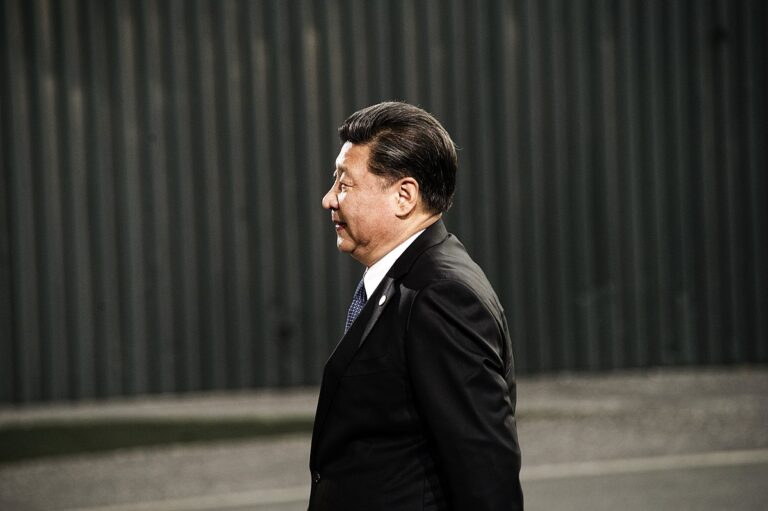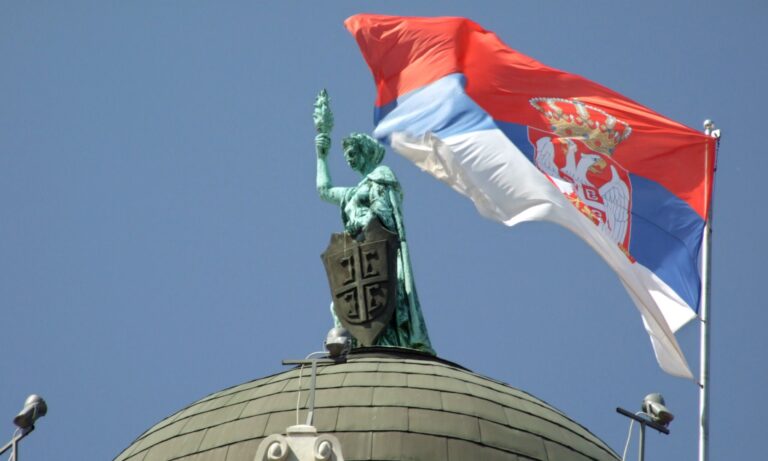
Few people following international affairs will have missed the now infamous photo of the Serbian President, Alexander Vucic, kissing the Chinese flag at Belgrade Airport a year ago. In the global scramble for protective equipment and masks, Vucic turned to his political friends in Beijing who duly obliged, securing a major diplomatic victory at a time of rising questioning of Chinese behaviour in relation to the emerging COVID-19 pandemic. Having overplayed his hand diplomatically and as societies settled into a routine in terms of handling the epidemic, it appeared that the relevance of Chinese engagement in the matter would wane.
Yet, the EU bungled its vaccination support for the Western Balkans, thereby opening the way for another round of health diplomacy as China and Russia began shipping their vaccines to Serbia. To the astonishment of many, this has allowed the country to leap ahead in its vaccination programme, providing further evidence of the benefits of ‘multi-vector’ diplomacy.
Further, ‘vaccine diplomacy’ has now progressed beyond supply and distribution and is presently entering a new stage, one of production. An agreement has already been signed to produce locally the Chinese Sinopharm vaccine with funds from both China and United Arab Emirates. This investment could potentially be employed as a platform for further expansion of medical and pharmaceutical cooperation. Russia has made a similar commitment, following an agreement between the Russian Direct Investment Fund and the Serbian vaccine institute Torlak. Under its terms, the Russian vaccine Sputnik V will be produced there and then exported across Europe, depending on demand and regulatory approval.
From this perspective, cooperation will now lead to the generation of a tangible public good which goes beyond the mere symbolism of ad hoc shipments of assistance. Importantly, this is facilitating a transformation whereby ‘multi-vector’ diplomacy is not just a foreign policy approach, but a maturation into a development model. In this model, geopolitical hedging and equidistance lead to longer-term, tangible and structural benefits. Thus far, 2021 is providing further evidence of such a shift as investors from all parts of the globe continue to plan and implement projects in the country.
Opening the Doors to All Investors
Beyond vaccines, China has continued to expand its economic presence in Serbia thus far in 2021. The owner of Bor copper mining and smelter complex, Zijin Mining, is investing another €330 million on top of prior investments and is constructing a factory at another mining site. A group of Chinese investors also officially expressed interest in the construction of an oil refinery at Smederevo worth some $2.6 billion with activities due to start in April. German and US companies are expected to be involved in the process.
In January, another Chinese company, Power Construction Corporation, together with Alstom and Egis of France signed a memorandum with the Serbian government about the construction of the initial two lines of the Belgrade Metro. The project will be worth some €4.4 billion and is partly funded by Beijing and Paris with actual construction expected to begin in late 2021. Further, work on current projects, such as the construction of the Belgrade-Budapest high-speed railway and the Belgrade-South Adriatic highway, are proceeding apace. The Serbian government is also in talks to purchase high-speed trains from China.
Yet, the ‘Middle Kingdom’ has by no means been the only major economic actor expanding its presence in the country. In February, the Japanese electric-motors company Nidec selected Novi Sad as a site for its future factory. The investment is expected to be $1.9 billion and will eventually produce 300,000 units by 2023. In December 2020, Toyo Tires began building a factory in the town of Indjija with an initial investment of €367 million. The factory will eventually employ 537 people and produce 5 million tires annually.
Russia is also quite active. The Serbian section of the TurkStream gas pipeline has been completed with its backing. Gazprom is expected to commission a 200 MW gas-fired power plant of NIS oil and gas company, to be built with Chinese equipment in Pancevo. Further, Russian-owned Nis and the Swiss MET Renewables AG are to begin building a 102 MW wind park in the municipality of Plandishte.
Western actors are not standing idly by either. Just weeks ago, the German auto-parts firm, Continental, opened its factory in Novi Sad, an investment worth some €140 million. Its presence builds on an R&D unit established back in 2018, employing some 600 people. The company has also declared its intension to construct another factory at Kac in northern Serbia.
Meanwhile, France and the World Bank are engaged in a project to assist Serbia upgrade its railway infrastructure as the country intends to spend some $3.3 billion to that effect. Rio Tinto has stepped up its exploration of the Jadar lithium/borate site which is likely to lead to the production of batteries for the expanding EV market. Recently, the French company, IEL OIE Balkan Renewable Energy, announced it will begin the construction of four geothermal projects in Vranje, Subotica, Kikinda and Ruma.
Despite lingering uncertainties, the US International Development Finance Corporation has restated its intensions to continue with activities, mainly focused on infrastructure and renewable energy, thereby opening the way for further investments. Importantly, the Serbian government has confirmed its plans to privatize another 20 state-owned companies in the transport, mining, engineering and construction sectors which are certain to attract further foreign investment. This year, the construction of the Peace Highway between Nis and Pristina, Kosovo is to begin, with funding to the tune of $220 million euro provided entirely by EU institutions.
Turning the ‘Multi-Vector’ Approach into a Model
For quite some time, the Serbian ‘multi-vector’ approach to international affairs has been roundly dismissed as either a mere conceptual hang-over from Yugoslav times, or rather a tired political trope utilized to legitimize an increasingly autocratic regime. It has been perceived as an unworkable solution for an increasingly integrated European continent which punishes political freelancers with excessive hedging strategies. Yet, the country appears to be in position to attempt the transformation of a foreign policy concept into a wider developmental model at a time of numerous global displacements.
At least three dynamics are at work in this transition. Firstly, Serbia is increasingly able to attract economic investments from a widening range of actors, leveraging its friendly political approach and regional locational strength. Secondly, advances in vaccine production and greenfield investments mark a transition to tangible public goods and benefits to the wider public, going beyond Government-to-Government deals often perceived as irrelevant to the country’s citizens. Thirdly, this instrumentalization of multi-polarity is allowing the country to enhance its regional role as it engages in its own ‘vaccine diplomacy’ and economic expansion.
Undoubtedly, the next few years will witness the strengthening of this stance in an effort to buttress legitimacy, contain dissent, and harness nationalist feelings. Moreover, while such an approach is likely to be a less viable option for the smaller and less economically attractive counties in the Western Balkans, it could nevertheless quietly imbue citizens and elites with a feeling that a similar approach might hold some promise, especially as EU membership remains an ever-distant prospect.
Clearly, there are important factors pulling in the opposite direction. Rising geopolitical polarization makes such ‘middle of the road’ positions hard to maintain as Serbia might be forced to actually take sides. Growing European economic engagement might disrupt the new equilibrium as the gravitational force of Serbia’s status as a European country creates more systemic incentives to tilt westwards. Further, many non-western projects remain solely on paper and are continuously postponed or otherwise fail to convince in terms of their wider societal benefits. These factors could stand in the way of multi-polarity maturing into an effective development model.
Yet, the geopolitical ambivalence of the Western Balkans is unlikely to end any time soon, particularly as its purposeful leveraging offers an attractive proposition for Belgrade. While its transformation into a solid, workable system remains uncertain, its potential success could have significant political consequences, both in Serbia and beyond.
Written by
Vladimir Shopov
Vladimir Shopov is the Founder of the Bulgarian Institute of International Affairs. Previously, Vladimir Shopov has worked as a Counselor at the Bulgarian Mission to the EU, EU Policy Adviser to the Minister of Home Affairs, and Adviser at the Ministry of Foreign Affairs and Parliament. Currently, he is a Visiting Policy Fellow at the European Council on Foreign Affairs.


